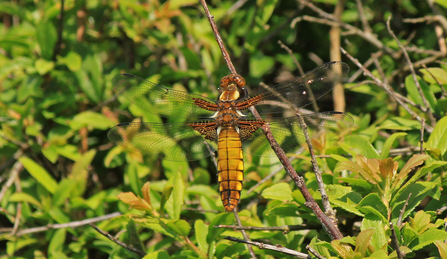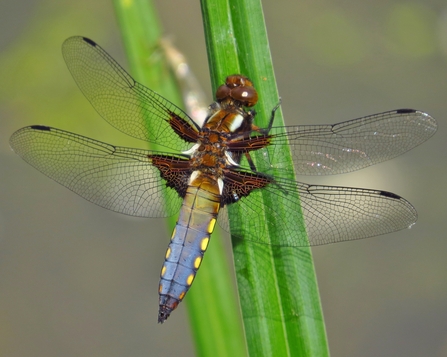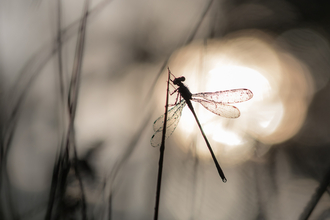Spring most definitely arrived in April this year and there are few nicer things to do than while away an afternoon alongside a pond. I don't know about you but I find there's something very relaxing about sitting by water. Perhaps you've got a pond in your garden or there's a waterbody nearby that you can relax next to? If you're visited by dragons while you're sitting there, so much the better!
Dragonflies have a long lineage, with fossils indicating their presence as long ago as 250million years! The largest in the fossil record was about the size of a sparrowhawk but today’s UK dragons top the charts with just a 10cm wingspan. And, as April turns to May, you’re bound to bump into a broad-bodied chaser or two.






